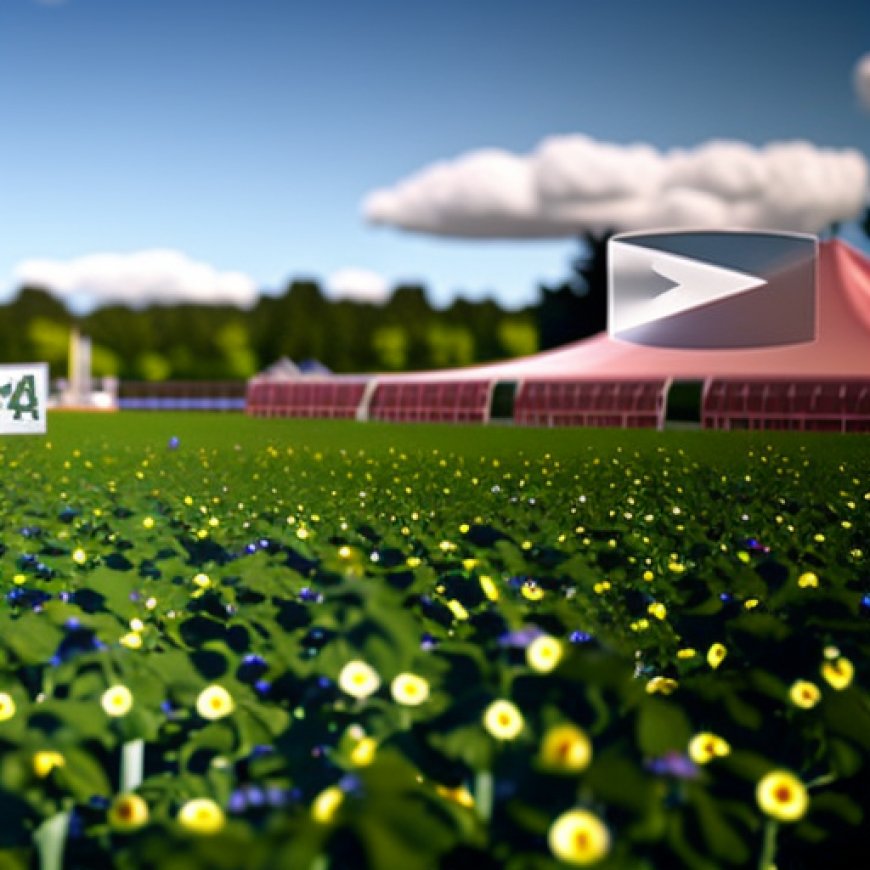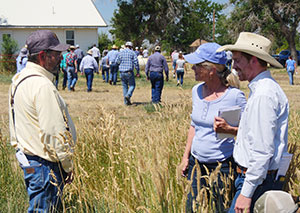UW to Highlight Agricultural Research at Sheridan Field Day Aug. 2
UW to Highlight Agricultural Research at Sheridan Field Day Aug. 2 University of Wyoming News


University of Wyoming Sheridan Research and Extension Center to Host Educational Field Day

Participants mingle with presenters at a Working Lands/Soil Health Field Day hosted, in part, at the Sheridan Research and Extension Center last summer. (UW Photo)
The University of Wyoming Sheridan Research and Extension Center will host an educational field day on Wednesday, August 2, at the Adams Ranch.
The free public event will highlight new research on crop evaluation, invasive grass management, alternative forage crops, native plants, and other topics of interest.
Registration and Schedule
- Registration begins at 8:30 a.m. at 1090 Dome Loop in Sheridan.
- Field tours begin at 9 a.m.
- A light lunch will be served at noon.
“Our research team is working on a number of projects to improve agricultural production and natural resource management in the region,” says Brian Mealor, director of the Sheridan Research and Extension Center. “Field days give folks a chance to learn directly from the scientists doing the work and to ask questions for themselves.”
Field Tour Topics
- Plant breeding experiments to improve dry bean yield and harvest efficiency
- Evaluation of native plant materials
- Alfalfa weevil management
- Use of ground-penetrating radar to select for root crop yield
- Bulbous bluegrass management
- Unmanned aerial data collection
Attendees are asked to RSVP by calling the Sheridan Research and Extension Center at (307) 673-2856 or emailing shrec@uwyo.edu no later than Friday, July 28.
SDGs, Targets, and Indicators Analysis
1. Which SDGs are addressed or connected to the issues highlighted in the article?
- SDG 2: Zero Hunger – The article mentions research on crop evaluation, alternative forage crops, and plant breeding experiments to improve dry bean yield, which are all related to achieving food security and promoting sustainable agriculture.
- SDG 15: Life on Land – The article discusses invasive grass management, evaluation of native plant materials, and bulbous bluegrass management, all of which are related to conserving and restoring terrestrial ecosystems.
2. What specific targets under those SDGs can be identified based on the article’s content?
- SDG 2.4: By 2030, ensure sustainable food production systems and implement resilient agricultural practices that increase productivity and production, that help maintain ecosystems, that strengthen capacity for adaptation to climate change, extreme weather, drought, flooding and other disasters, and that progressively improve land and soil quality.
- SDG 15.1: By 2020, ensure the conservation, restoration and sustainable use of terrestrial and inland freshwater ecosystems and their services, in particular forests, wetlands, mountains and drylands, in line with obligations under international agreements.
3. Are there any indicators mentioned or implied in the article that can be used to measure progress towards the identified targets?
- Indicator for SDG 2.4: Crop evaluation research, alternative forage crops research, and plant breeding experiments to improve dry bean yield can be used as indicators to measure progress towards sustainable food production systems and resilient agricultural practices.
- Indicator for SDG 15.1: Invasive grass management, evaluation of native plant materials, and bulbous bluegrass management can be used as indicators to measure progress towards the conservation, restoration, and sustainable use of terrestrial ecosystems.
4. Table: SDGs, Targets, and Indicators
| SDGs | Targets | Indicators |
|---|---|---|
| SDG 2: Zero Hunger | 2.4: By 2030, ensure sustainable food production systems and implement resilient agricultural practices | – Crop evaluation research – Alternative forage crops research – Plant breeding experiments to improve dry bean yield |
| SDG 15: Life on Land | 15.1: By 2020, ensure the conservation, restoration and sustainable use of terrestrial and inland freshwater ecosystems | – Invasive grass management – Evaluation of native plant materials – Bulbous bluegrass management |
Behold! This splendid article springs forth from the wellspring of knowledge, shaped by a wondrous proprietary AI technology that delved into a vast ocean of data, illuminating the path towards the Sustainable Development Goals. Remember that all rights are reserved by SDG Investors LLC, empowering us to champion progress together.
Source: uwyo.edu

Join us, as fellow seekers of change, on a transformative journey at https://sdgtalks.ai/welcome, where you can become a member and actively contribute to shaping a brighter future.







